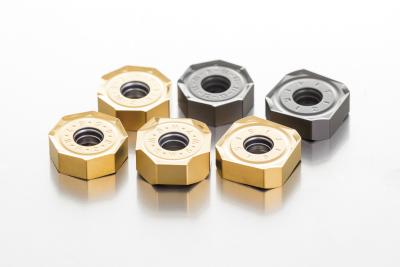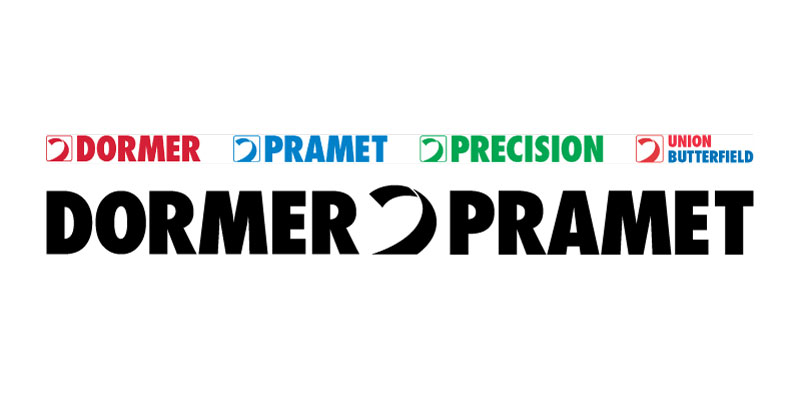
A new highly economical face milling family from Dormer Pramet has launched, covering a wide range of applications with negative octagonal and square inserts, along with a variety of shell mills.
The latest Pramet range includes three variants of a 16-edged ONMX insert for depths of cut up to 0.157” (4mm). The standard geometries include the F for light operations, M for versatile use, and R for rough cuts in a variety of materials. Additionally, the 8-edged ONMX-W is a specific wiper insert for high-quality surface finish with large cutters and high feed rate.
Along with the Pramet ONMX inserts, the global manufacturer has added a range of 8-edged SNMX inserts for higher metal removal rate. This includes an M chip breaker for medium machining and an R geometry for roughing, both for depths of cut up to 0.275” (7mm) in various materials.
All the new face milling inserts can be used with our new shell cutter body. The Pramet ISON06 is available in sizes 2-6 inches, and the metric family SON06 is available in range 1.968”–9.843” (50–250mm).
The assortment is made of high-quality hardened tool steel, to improve durability and process security. Combined with internal coolant systems on the entire range, these tools improve chip evacuation to achieve a high surface quality.
Contact Details
Related Glossary Terms
- coolant
coolant
Fluid that reduces temperature buildup at the tool/workpiece interface during machining. Normally takes the form of a liquid such as soluble or chemical mixtures (semisynthetic, synthetic) but can be pressurized air or other gas. Because of water’s ability to absorb great quantities of heat, it is widely used as a coolant and vehicle for various cutting compounds, with the water-to-compound ratio varying with the machining task. See cutting fluid; semisynthetic cutting fluid; soluble-oil cutting fluid; synthetic cutting fluid.
- feed
feed
Rate of change of position of the tool as a whole, relative to the workpiece while cutting.
- gang cutting ( milling)
gang cutting ( milling)
Machining with several cutters mounted on a single arbor, generally for simultaneous cutting.
- milling
milling
Machining operation in which metal or other material is removed by applying power to a rotating cutter. In vertical milling, the cutting tool is mounted vertically on the spindle. In horizontal milling, the cutting tool is mounted horizontally, either directly on the spindle or on an arbor. Horizontal milling is further broken down into conventional milling, where the cutter rotates opposite the direction of feed, or “up” into the workpiece; and climb milling, where the cutter rotates in the direction of feed, or “down” into the workpiece. Milling operations include plane or surface milling, endmilling, facemilling, angle milling, form milling and profiling.
- wiper
wiper
Metal-removing edge on the face of a cutter that travels in a plane perpendicular to the axis. It is the edge that sweeps the machined surface. The flat should be as wide as the feed per revolution of the cutter. This allows any given insert to wipe the entire workpiece surface and impart a fine surface finish at a high feed rate.

